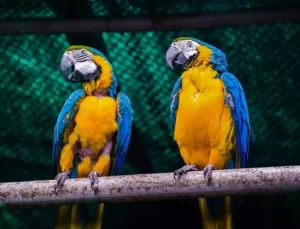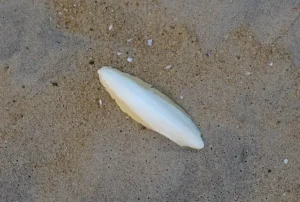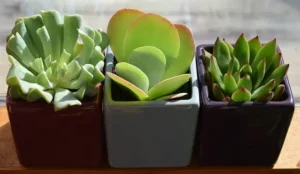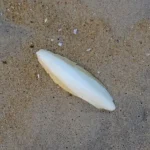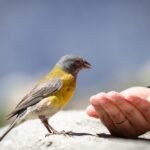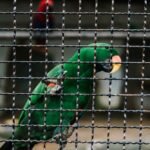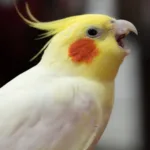Parrots have a long lifespan and typically mate only once every year. Therefore, reproductive success plays a crucial role in a parrot’s choice and long-term commitment to one partner.
In cases where the parrots are not compatible with each other or they cannot reproduce successfully, they may seek new partners.
Parrots practice what is known as social monogamy, where they pair up for one or more breeding seasons to raise chicks. Most parrots do not pair for life and usually change partners in different breeding seasons. However, they do not necessarily switch mates every season.
This behavior is consistent in captivity as well. When captive parrots have the choice between different parrots, they may switch till they find a suitable mate. However, in case parrots are housed together in pairs, they can form close bonds with each other and may stay together until they are separated.
Quick Navigation
Are Parrots Monogamous?
Parrots are monogamous birds, but their purpose is primarily reproduction. Most parrots breed once a year and work together to incubate the eggs and raise their chicks.
While they maintain one sexual partner at a time, instances of infidelity can occur when a pair is incompatible or has trouble reproducing. The level of fidelity can vary among different parrot species.
According to a study by Emu – Austral Ornithology, parrots who stay with one partner, and take care of their chicks together are less likely to switch mates.
The researchers studied social pair fidelity in the Australian parrot, the Crimson Rosella over a period of 8 years. They found no cases of extra-pair paternity, which is when a female mates with a male other than her social partner.
However, they found one case where the female laid eggs in the nests of other females of the same species. Interestingly, out of the parrots that were recaptured, only 32% paired with more than one partner in different mating seasons.
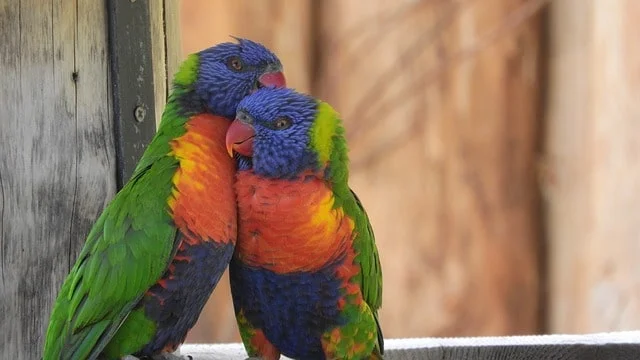
Do Parrots Cheat On Each Other?
Parrots are practical creatures when it comes to mating. Their fidelity towards their partners is dependent on a number of factors. If the parrots are happy with each other and successfully able to reproduce, they will stay loyal to one another. They do not have multiple partners at one time. However, cheating is quite common in parrots.
Why Do Parrots Change Partners?
Most parrots do not stick with a single partner all their life. But given that parrots choose each other based on a variety of criteria, it seems odd that their romance fizzles out.
A study published by Science Direct tested three hypotheses on mate-switching behavior in parrots. These included mate behavioral compatibility, reproductive success, and extrapair sexual behavior.
The study looked at how well the parrot couples got along. A pair was considered more compatible if they didn’t fight much, stayed close, preened each other, and copulated frequently.
Pairs where neither bird cheated on their partner were considered the most compatible. Each bird that engaged in extrapair copulation ended up leaving their old partner and repairing with the cheating partner.
This means that cheating can lead to parrots finding better partners and starting new relationships, especially if their old one wasn’t working out well.
This also suggests that cheating is the most prominent reason for mate switching in parrots and that behavioral compatibility is necessary for parrots to stay together longer.
How Do Parrots Attract A Mate?
Before the arrival of the breeding season, parrots need to find a mate. Parrots are monogamous creatures and look for a mate to copulate with for the upcoming breeding season.
Typically, it is the male parrots who have to compete for the females’ attention. Female parrots choose their mate based on various physical and behavioral characteristics.
There are various features that male parrots showcase, such as their bright plumage, loud vocalizations, and aerial abilities.
Feathers are one of the main features that a male parrot flaunts to attract a mate, A healthy and vibrant plumage is a sign of verility and bodes well for reproduction success. Parrots also use their feathers in different ways to get the female’s attention.
They may puff up their feathers to appear larger and more dominant than the other males. Wing flapping is also a common display. The parrot opens its wings and strokes it repeatedly to signal its desire to mate.
If the female shows interest in a male parrot, they both engage in other forms of courtship. The male parrot will regurgitate food in front of the female as a token of love.
It also signifies that the male promises to provide food for its family when the female is incubating. The two parrots may also engage in allopreening, which involves grooming each other’s feathers.
Some parrot species engage in intricate courtship dances and displays. After both are ready to copulate, the male will mount the female parrots for the cloacal kiss.
Do Parrots Bond With Their Mates?
Parrots form strong bonds with their mates and rely on one another for social and reproductive needs. When two parrots are bonded to each other, they engage in various intimate displays of love, including allopreening, kissing, regurgitating food in each other’s mouth, and synchronized activities.
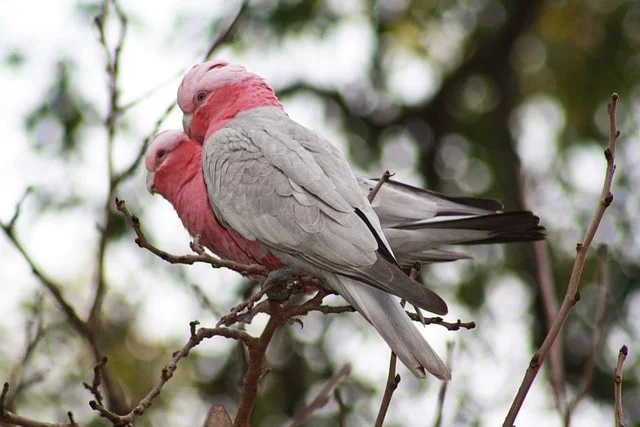
Do Parrots Mourn The Loss Of A Mate?
Parrots are highly social birds and thrive in companionship. When two parrots are housed together, they share a very close bond. If one of them passes away, the other may react with grief and show depressive behavior.
Parrots are capable of emotions and they have been observed to mourn the loss of loved ones, whether it is their mate, friend, or owner.
Parrots may experience intense grief at the death of a mate. They can become depressed and lose interest in eating and other activities.
After the death of a mate, parrots can go into a mourning period for months. They may not seek out a new mate for a while and may continue to mourn. In captivity, introducing a new bird can speed up the mourning process for the parrot.
